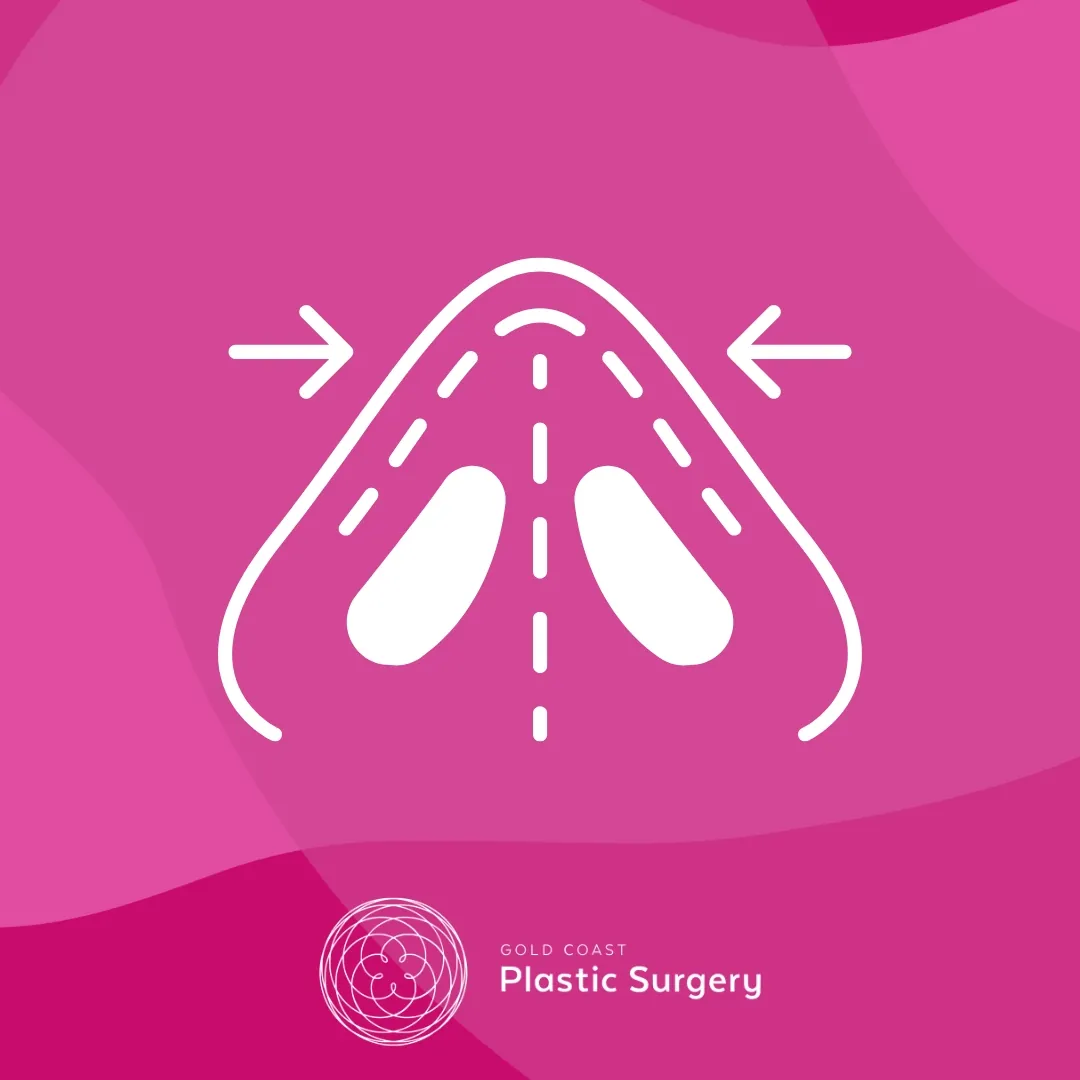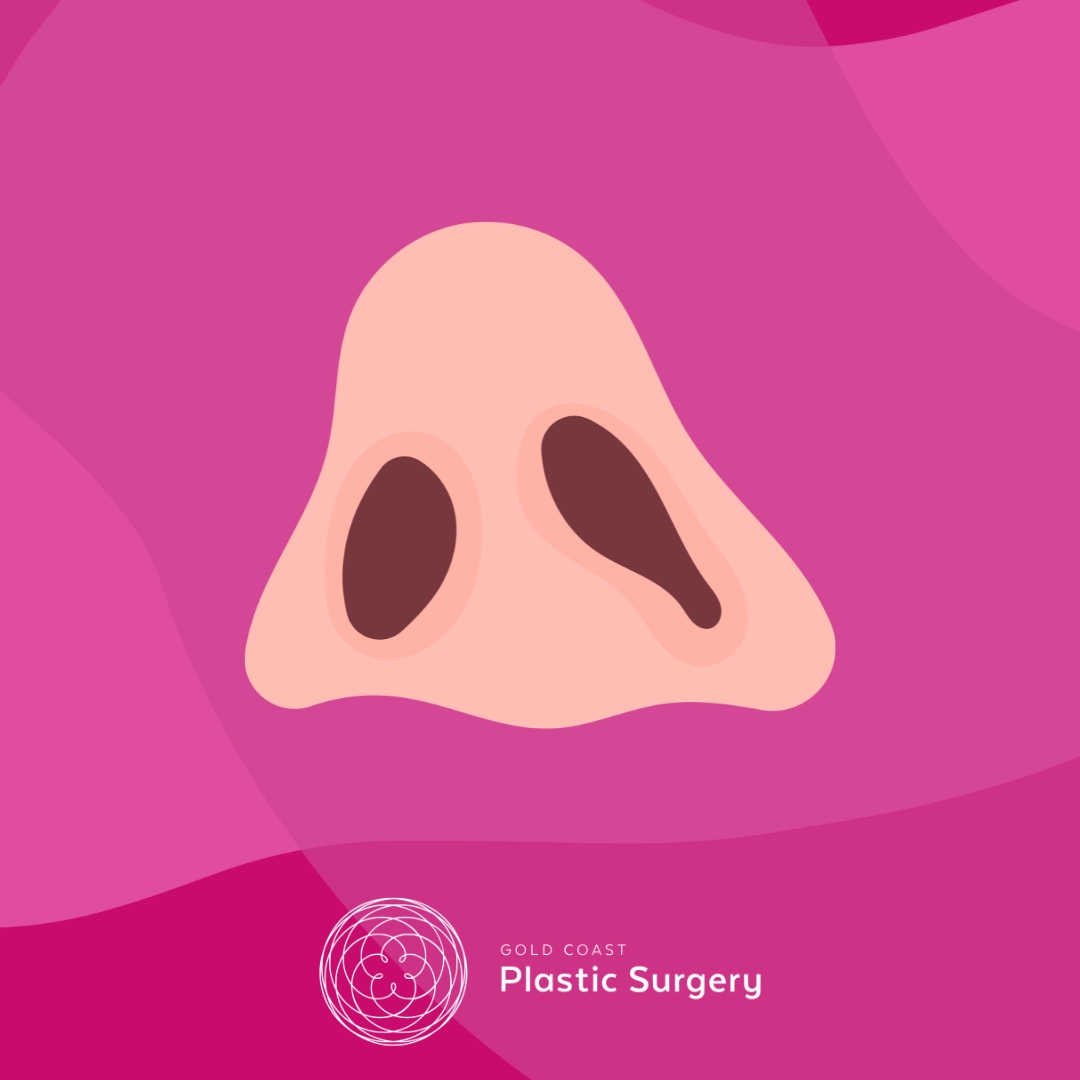
If you suffer from nasal congestion, stuffy nose, sinus infections or have difficulties breathing through your nose – a deviated septum could be to blame. A deviated nasal septum is the displacement of the septum – the bone and cartilage that divides your nostrils. While it’s quite a common condition, many people don’t even realise they have one. Please note, that you cannot fully self-diagnose through a deviated septum self-test and we recommend seeking advice from a professional if problems persist.
This condition is difficult to diagnose simply by looking at your nose. Even if your nose appears straight on the outside, the internal structures may be deviated. The only way to be sure if you have a deviated nose septum is through a medical evaluation. Yet, there’s a simple self-test you can do at home, to determine if you may have a deviated septum.
And, if you do, surgery of the septum (septoplasty) is the most common deviated septum treatment option and may be recommended.
How to Tell if You Have a Deviated Septum?

Fortunately, it can be simple to determine if you are suffering from a deviated septum. It may present as difficulty breathing through the nose, constant sinus infections, or snoring. Although, it is testable, right now, in the comfort of your own home. This step-by-step deviated septum self-test is as follows:
- Using your index finger, press down on your nose to close off one nasal passage.
- Take a deep breath in through the open nostril.
- Repeat on the other side.
While you’re doing this, take note of whether it’s easy or difficult to breathe through the open nostril. If it’s easy for air to pass through both nostrils, then you likely do not have a septal deviation.
If there is a noticeable difference between sides (ie. your airways feel open on one side and not the other), it is possible that you could have a deviated septum.
Not sure? Practice breathing through one nostril and then the other. Do this deviated septum self-test as often as needed, until you are sure you do or don’t have a deviation.
As well as this self-evaluation for a deviated septum, there are other symptoms that can be a result of the condition. All possible causes, symptoms and treatments will be discussed in this article.
What Is a Deviated Septum?
A deviated septum is the displacement of the nasal septum – the bone and cartilage that divides your nostrils. It’s a common condition, with over 80% of people thought to have some form of nose deviation.
The severity of this deviation can range from very mild, where there are no noticeable symptoms, to severe, where the nose is significantly crooked.
A straight nasal passage is two that are generally the same size. A nasal deviation is apparent when the nasal passages are of different sizes. This may or may not cause certain symptoms, such as being hard to breathe through the nose.

Deviated Septum Causes
The septum of the nose can become deviated for a number of reasons. It could be due to trauma, from an accident or injury, birth defects or simply the way your nose has grown over time. Causes of deviated septum include:
Injury /Trauma
A deviated septum is commonly caused by an injury to the nose. This could be from impact during sport, an accident or even just from rubbing your nose too hard.
Natural Causes
Nasal deviation can also be present at birth, due to genetics, or can develop over time, as the cartilage in the nose deteriorates with age. The condition is more common in men, than women and usually develops in adults, although it can also affect children too.
Deviated Septum Symptoms

Deviated nasal septum symptoms can depend on the severity of your condition. If you have a minor deviated septum, you’re unlikely to experience any symptoms at all. However, if your septum is significantly deviated, you may have problems breathing and suffer from other health problems, including:
Crooked Nose
The most obvious symptom of a deviated septum is a crooked nose. This is a result of the septum pushing the nose to one side and is most apparent when caused by an injury.
One Nostril is Always Blocked
The most common symptom of a deviated septum is nasal breathing issues. One blocked nostril occurs when the displaced septum narrows or blocks your nasal passage. This can occur on one or both sides.
Nasal Congestion/Drainage (One or Both Nostrils)
Another common symptom is nasal congestion or a runny nose, as the deviation can cause mucus to build up in the affected nostril. You may also have trouble draining this mucus, leading to a feeling of congestion.
Recurring Sinus Infections
If you have a deviated septum, you may be more prone to sinus infections. This is because the displaced septum can block the drainage of mucus from your sinuses, leading to an accumulation of fluid.
Recurring Nosebleeds
Because a deviated septum can cause dryness and cracking in the nose, you may suffer from nosebleeds more often than normal.
Facial Discomfort or Pain
If your septum deviation is severe, you may also experience head or facial pain, as well as tenderness around the bridge of your nose.
Difficulty Sleeping & Snoring
A deviated septum can also disturb your sleep, as it can make breathing difficult and cause you to snore loudly. This can lead to fatigue during the day.
Collapsed Septum
A deviated septum can cause a nasal valve collapse. The nasal valves are the small flaps of tissue, made up of cartilage, that open and close as you breathe through your nose. They act as one-way doors, opening when you inhale so air can come in and closing when you exhale so air can’t escape.
Nasal valve collapse occurs when the nasal valves don’t open properly, making it difficult to breathe through your nose. This can be caused by a deviated septum, as well as other conditions such as allergies, colds, and sinus infections.
As well as the above symptoms, other signs of a deviated septum include:
- Headaches and/or migraines (generally caused by sinus infections or nasal congestion)
- Decreased sense of smell
- Persistent postnasal drip
- Frequent colds or ear infections
If you did the deviated septum self-test and are experiencing some of the following symptoms, it might be time to seek treatment and contact us today.
Deviated Septum Treatment

The good news is that a deviated septum nose can be managed or treated. There are a few options available, however, the optimal ‘fix’ for a deviated septum is surgery.
Your recommended course of treatment will depend on the severity of your symptoms and the underlying cause of your condition.
- If you only have a mild septum deviation and very few symptoms, treatment may be directed at managing your symptoms. Decongestants, antihistamines and humidifiers may be recommended.
- For a more severe septum deviation, or if conservative treatment measures haven’t worked, you may be recommended to undergo septoplasty surgery. This is a procedure to correct the position of the septum, by making an incision in the nostril and realigning the cartilage. It is best for those who cannot breathe properly through the nose or have difficulty with airflow.
Deviated Septum Surgery
Septum deviation surgery is a procedure to correct the position of the septum.
The aim of this surgery is to:
- Correct an uneven septum or broken septum;
- Relieve symptoms such as difficulty breathing, generally, caused by a deviated septum;
- Improve drainage of your sinuses, to reduce the risk of sinus infections;
- Reduce snoring
- Improve your overall quality of life
If you’re considering this treatment option, it’s important to note that septoplasty is not a cosmetic procedure. It is done purely to improve your breathing and should not be expected to correct a crooked nose. If you would also like to see cosmetic changes, a septorhinoplasty may be the right treatment for you.
Procedure
During a septoplasty procedure, Gold Coast Plastic Surgery Plastic Surgeon Dr Mark Doyle will make an incision in your nostril and then gently move the septum into the correct position.
In some cases, the septum may need to be removed completely and then repositioned in a more aligned position. This is known as a total septal resection. Once the septum is in the correct position, it will be held there with splints or packing. These will then need to be removed post-surgery.
Recovery
After your surgery, you can expect some swelling and bruising around your nose and eyes. This will usually subside within 1 – 2 weeks. You may also experience some discomfort and pain, for which you will be given pain relief medication.
It’s important to rest as much as possible for the first few days after your surgery. You should also avoid blowing your nose and strenuous activities during this time. Most people make a full recovery within two to three weeks and experience a significant improvement in their symptoms.
Complications
As with any surgery, there are always risks of complications. These may include:
- Bleeding
- Infection
- Damage to the tissue around your nose
- A reaction to the anaesthesia
- Persistent pain
- Scarring
However, these complications are rare and, if they do occur, can usually be treated. Gold Coast Plastic Surgery Plastic Surgeon Dr Mark Doyle will discuss all the risks during your initial consultation.
FAQ

What Does a Deviated Septum Look Like?
A deviated septum can present as a narrow nasal passage, a crooked nose bridge, or uneven nostrils. Put your head back and look at the position of the septum. This deviated septum self-test can help identify if you have a deviation. If the nasal septal wall is further to one side or one nostril smaller than the other, it’s likely deviated.
Why Is My Nose Always Blocked?
A deviated septum is often the cause of nasal obstruction. When the septum is crooked, it can block off one side of your nose and make it difficult to breathe.
How Do You Fix a Nose Breathing Problem?
If you have a deviated septum, you may be prescribed medication to help manage your symptoms. If this doesn’t work, nasal surgery, such as septoplasty may be recommended.
Next Steps – Book a Consultation with Gold Coast Plastic Surgery Plastic Surgeon Dr Mark Doyle
If you can only breathe through one nostril or you’ve tried the deviated septum self-test and believe that you have a nasal septal deviation, it may be time to see a specialist.
If you’re interested in surgery to repair a deviated septum, contact Gold Coast Plastic Surgery for a consultation today. Plastic Surgeon Dr Mark Doyle will assess your individual case and recommend the best treatment plan, to help you achieve your desired outcome. To book an appointment, call 5598 0988 or submit a confidential enquiry form.
About Dr Mark Doyle FRACS (Plas) – Queensland Plastic Surgeon
Servicing patients in Gold Coast, Brisbane, Sunshine Coast, Cairns and New South Wales NSW – Northern Rivers, Byron Bay, Ballina, Lismore and more.
Dr Mark Doyle is a fully qualified Specialist Plastic Surgeon with over 30 years of experience performing breast, body, face and nose surgery. He has completed all required training and only carries out approved surgical practices. There are NO undertrained doctors or cosmetic doctors acting as surgeons at Gold Coast Plastic Surgery.

